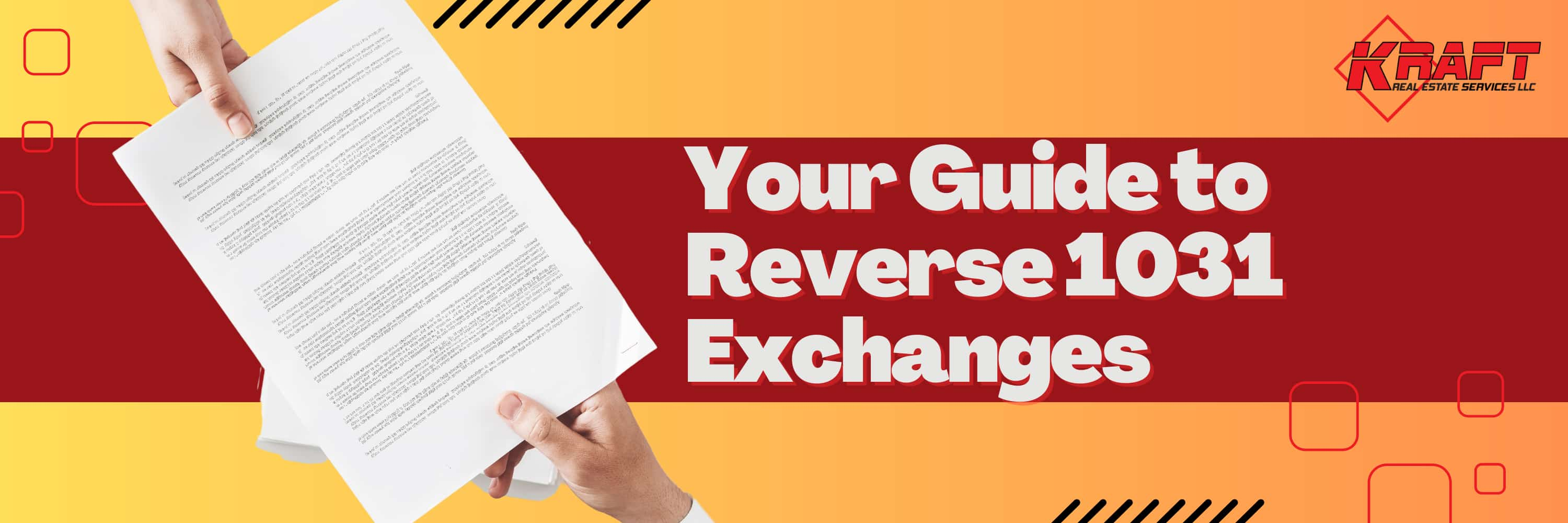
10 months ago
Understanding Reverse 1031 Exchanges: A Flexible Solution for Real Estate Investors
Understanding Reverse 1031 Exchanges: A Flexible Solution for Real Estate Investors
Navigating the world of real estate investments often involves understanding tax-advantaged strategies like 1031 exchanges. While many are familiar with the traditional 1031 exchange, the Reverse 1031 Exchange offers a creative solution for investors who need to buy before they sell. Here’s an in-depth look at how this lesser-known exchange works and why it might be the right tool for your investment strategy.
What Is a Reverse 1031 Exchange?
A Reverse 1031 Exchange allows investors to purchase their Replacement Property before selling their Relinquished Property. This approach differs from the more common “Delayed Exchange,” where the investor sells first and then buys. Reverse exchanges can be particularly useful when investors find the perfect property but need time to sell their current one.
However, this method is more complex and comes with strict IRS rules. Here’s how the process unfolds.
Key Steps in a Reverse 1031 Exchange
1. Engage an Exchange Accommodation Titleholder (EAT)
The process begins with the investor hiring an EAT, who temporarily holds the title to the Replacement Property. This arrangement is formalized through a Qualified Exchange Accommodation Agreement (QEAA).
2. Purchase the Replacement Property
The investor then buys the Replacement Property, ensuring it meets the “like-kind” requirement and is equal to or greater in value than the Relinquished Property. Financing may be necessary, and the EAT takes possession of the title once the purchase is complete.
3. Identify the Relinquished Property
Within 45 days of acquiring the Replacement Property, the investor must formally identify the property they intend to sell. This step requires written notification to the EAT or another involved party.
4. Sell the Relinquished Property
The investor has 180 days from the Replacement Property purchase to complete the sale of their Relinquished Property. If the sale doesn’t occur within this timeframe, the transaction could trigger tax liabilities.
5. Transfer Ownership
Once the Relinquished Property is sold, the EAT transfers the Replacement Property’s title to the investor, completing the exchange.
Why Choose a Reverse 1031 Exchange?
Investors often opt for a reverse exchange to avoid losing out on a desirable property. Other advantages include:
– Flexibility: Secure the Replacement Property first, removing the pressure of meeting tight buying deadlines.
– Tax Deferral: Preserve capital by deferring taxes on the sale of investment properties.
However, this strategy is not without challenges. The investor must be confident in their ability to sell the Relinquished Property within 180 days, as unsold properties can lead to unexpected tax consequences.
Like-Kind Requirements and IRS Compliance
Both properties in a Reverse 1031 Exchange must be “like-kind,” meaning they are held for business or investment purposes. For example, a commercial building could be exchanged for another commercial property, but not for a personal residence.
To comply with IRS guidelines, it’s crucial to work with a Qualified Intermediary (QI) or a knowledgeable professional who ensures all regulations are followed.
Is a Reverse 1031 Exchange Right for You?
Reverse 1031 Exchanges can be a powerful tool for savvy real estate investors, especially those who want to act quickly in a competitive market. However, they require careful planning and expert guidance due to their complexity.
At Kraft Real Estate Services, we are ready to help investors navigate complex transactions like reverse exchanges. If you’re considering this strategy, our experienced team (along with the exchange experts mentioned above) can guide you every step of the way, ensuring your exchange is both seamless and compliant.
